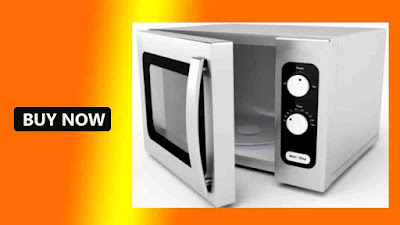Is it Safe to Put Stainless Steel in a Microwave?
You've presumably heard that placing metal in the microwave is a no-no, and keeping in mind that this is valid just to a point, it's likely solid counsel to regard. Metals like tin, steel and tempered steel - which is simply customary steel doped with chromium - reflect microwaves. That is not an issue without anyone else, but rather it can become one assuming the metal is crinkled, as in old tinfoil, or framed into complex shapes, like forks. In such cases, the metal can mirror the microwaves to and fro, intensifying the energy and lighting a fire. Level, thick bits of metal are typically alright, however assuming you nuke a hardened steel container, the microwaves could skip this way and that between the dividers and the skillet and light anything you're cooking.
Metal in the Microwave
The functioning piece of a microwave is the magnetron, which is a gadget initially created by the military. It changes electrical energy over to radio waves with an ordinary recurrence of 2.5 gigahertz. These microwaves cooperate with the particles in water, fats and sugar, making them vibrate at a similar recurrence. It's the vibrations of the particles that heat your food, not some sort of stray electrical charge that is drifting around inside a functioning microwave.
Actually, the microwaves shouldn't have any impact on metal things. Metal things don't get an electric charge from microwaves, and the particles that make up a piece of metal are excessively firmly bound to answer to microwaves by vibrating. The issue, nonetheless, is that metal reflects microwaves. Microwave producers exploit this reality by building the dividers of broilers out of metal to keep the radiation restricted to the stove.
Assuming two bits of metal are near one another inside a microwave, the reflection creates heat that can light anything in the stove and even ionize the air. Crinkled tin foil can really consume, and energy passing between the prongs of a fork can create sufficient hotness to deliver ignites and snaps that look like lightning. It's the air that is ionizing, however it looks like electrical arcing between the prongs.
Shouldn't something be said about Stainless Steel?
Treated steel has a layer of chromium oxide on its surface that forestalls erosion, yet other than that, it isn't vastly different from customary steel, taking everything into account. It's similarly pretty much as intelligent as normal steel or tinfoil - maybe more so. A level sheet of treated steel sitting on the lower part of the stove will most likely be unaffected by the microwaves, yet a hardened steel fork will snap and pop.
Ought to You Get it done?
Assuming you're uncertain about placing a treated steel thing in the microwave, the best guidance is: Don't. On the off chance that it isn't lying on the lower part of the stove, there's consistently the likelihood that it very well may be excessively near one of the dividers and could enhance the radiation. This can occur with tempered steel pots and holders. Utensils other than forks are normally protected, yet it's best 100% of the time to decide in favor security. You would rather not figure out the most difficult way possible that the spoon you believed was protected can light a fire assuming piece of it is standing up.





0 Comments